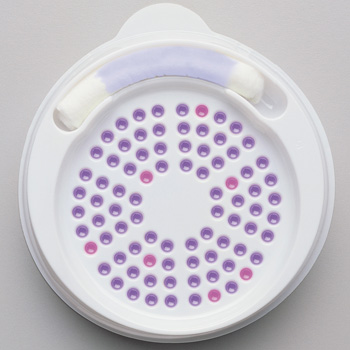Rapid Enumeration Offers Results You Can Count On

Microbial enumeration is a critical step in the food safety process. Consider the following cases:
• A supplier of raw ingredients readies and ships a large order to a food manufacturer. Upon receipt, the food manufacturer tests the raw ingredients. The tests results show a total plate count that is above the company's specification and the shipment is rejected. When this same scenario plays out a second time, the raw ingredient company is removed from the food manufacturer's list of contract suppliers.
• A beef grinding facility wins a contract to supply raw hamburger patties to several locations of a fast food restaurant chain. The facility receives certificates of analysis from all slaughter houses showing coliforms and
E. coli have been enumerated and meet levels of acceptability. The grinder, operating in compliance with USDA FSIS monitoring requirements for E. coli, needs another benchmark to verify the quality of the beef as it is being ground and formed into patties. In order to make delivery on time to the fast food outlets, the results of that benchmarking need to arrive within 24 hours.
• A produce grower is exporting product to a new market in another country. The foreign government has established a number of regulatory requirements for the microbiological safety of products allowed into the country. One of the restrictions emphasizes that the produce is tested by a recognized method that has been validated by an international scientific organization. Because the shelf life of the product is finite and there is the potential for spoilage during the lengthier shipment time, the produce exporter must find a method that is both validated and rapid to successfully do business in the new market.
In each of these scenarios, says Craig Scorah, Microbiology Products Manager with BioControl Systems, Inc., a worldwide leader in industrial microbiology testing products, a rapid enumeration method can provide real solutions to food safety challenges.
The Bellevue, WA-based company has a complete line of proprietary microbiology tests for food safety, pathogen testing, quality control and HACCP monitoring, including the SimPlate® system for routine microbiology counting procedures.
Since traditional enumeration methods such as the most probable number (MPN) can take up to five days to get results, food companies and testing laboratories have turned to rapid methods like SimPlate to gain the speed to results they need. Increased regulatory pressures and concerns about brand reputation and legal liability have increased the industry's need for faster, accurate results.
"The food industry is under strict timelines to get results out," Scorah says. "Equally important, however, is the need to use the most accurate testing methods to verify product wholesomeness. Since microbial enumeration is required by regulatory agencies for most foods, not only are the speed and accuracy of results incredibly important to food producers, but using a method that has been validated, preferably an AOAC Official Method, is critical.
Microbial Counts Provide Critical Data for Fast Release
Significant advancements in microbial enumeration have been made with BioControl's SimPlate utilizing the patented Binary Detection Technology[TM] (BDT) says Scorah. BioControl has developed proprietary media that detects specific enzymes related to the bacteria of interest to achieve quicker results. "The microbiologist no longer has to rely on bacteria to grow into colonies in order to be seen because the SimPlate media will show a color change when it detects the production of a specific enzyme. Utilizing a patented plating device consisting of 84 wells, the color change of the individual well is counted. The SimPlate Conversion Table provides the number of organisms present in the sample for the specific test."
While bacteria counts such as APC and coliforms do not imply the presence of pathogens, their importance should not be underestimated as an indicator of overall wholesomeness and safety of food products being released to the consumer. Scorah elaborates, "In other words, data derived from routine microbiology counting has an impact on critical economic decisions. If the total plate count of a raw ingredient is above specification, it's not going to be used by the receiver and that is going to cause an economic loss because processing is delayed. Similarly, if the coliform count on a finished product is too high, that product is either going to have to be totally reworked or rejected by the purchaser."
One of the areas in which rapid enumeration methods have had an impact is in the faster release of product. Food manufacturers can get results in as little as 24 hours for total plate counts--fast enough to release product the next day--and accurate enough to provide a level of assurance before shipping product to the next point in the distribution chain. "Food manufacturers do not want to incur economic losses as the result of rejected product or a product recall because the test results were inaccurate. This is one reason that both food companies and third-party testing laboratories are increasingly insisting on tests that are validated by recognized organizations such as AOAC International. The value of a validated method is the company has a high degree of confidence that when the product leaves the plant, it is wholesome and safe to consume."
www.biocontrolysys.com
Looking for a reprint of this article?
From high-res PDFs to custom plaques, order your copy today!





